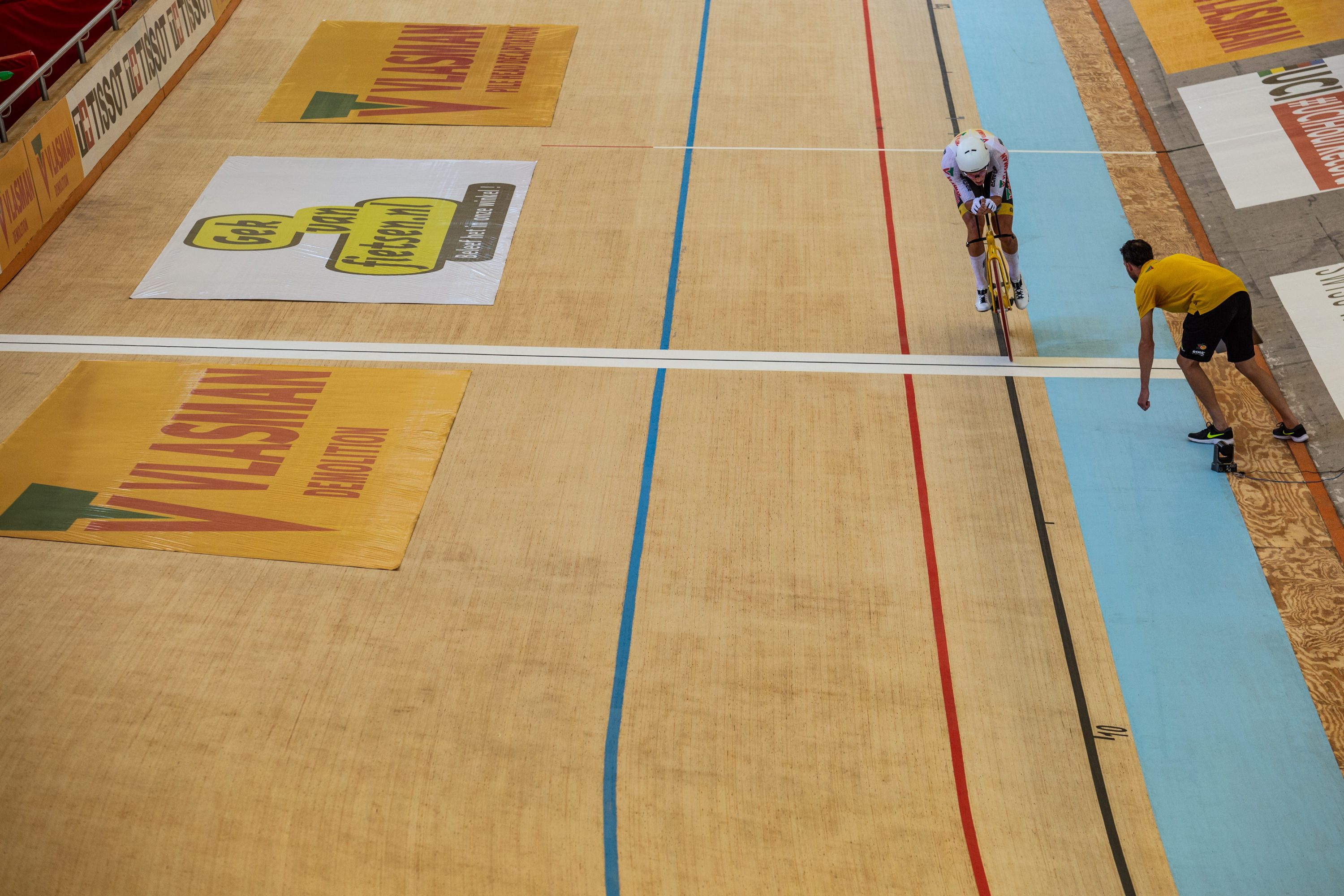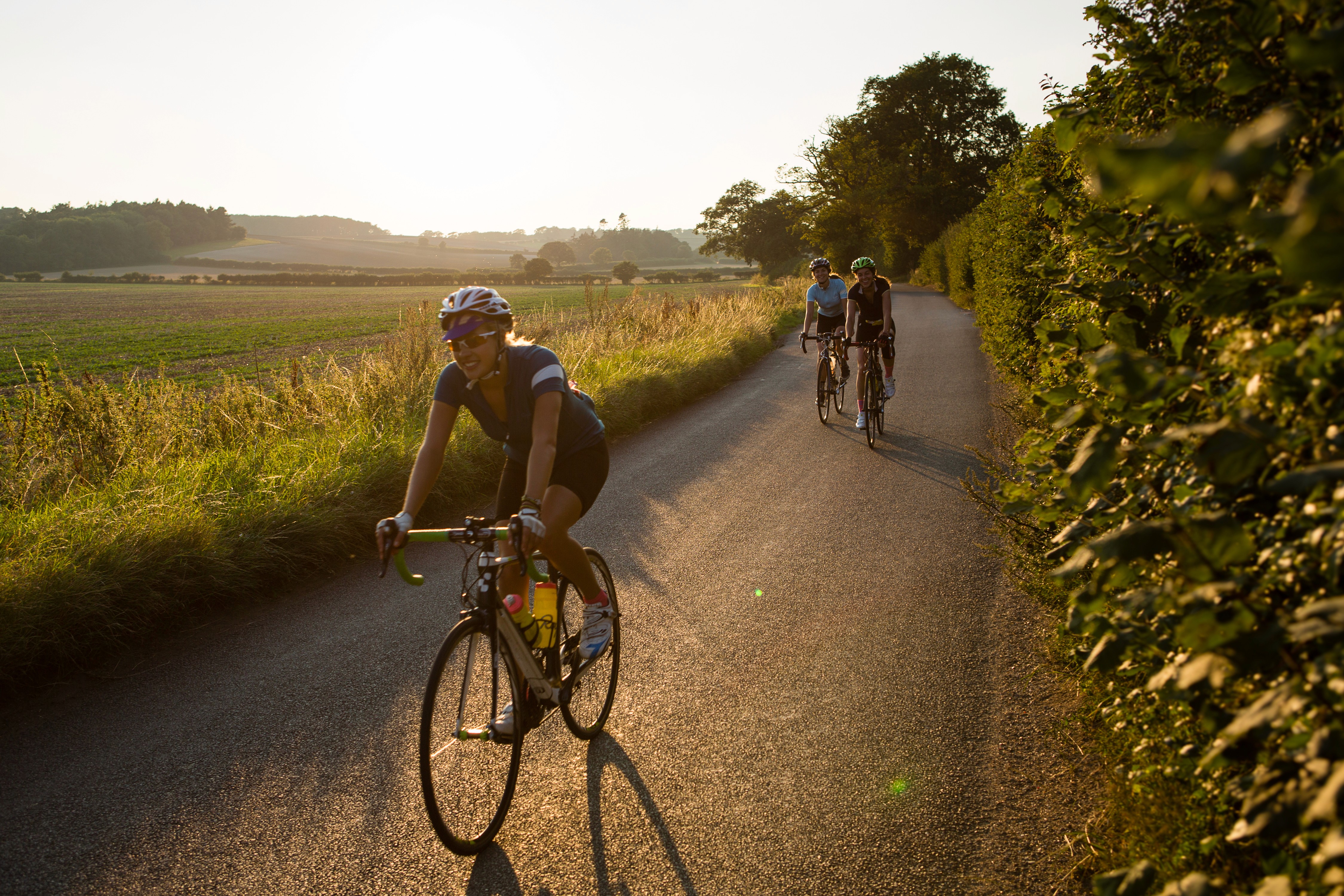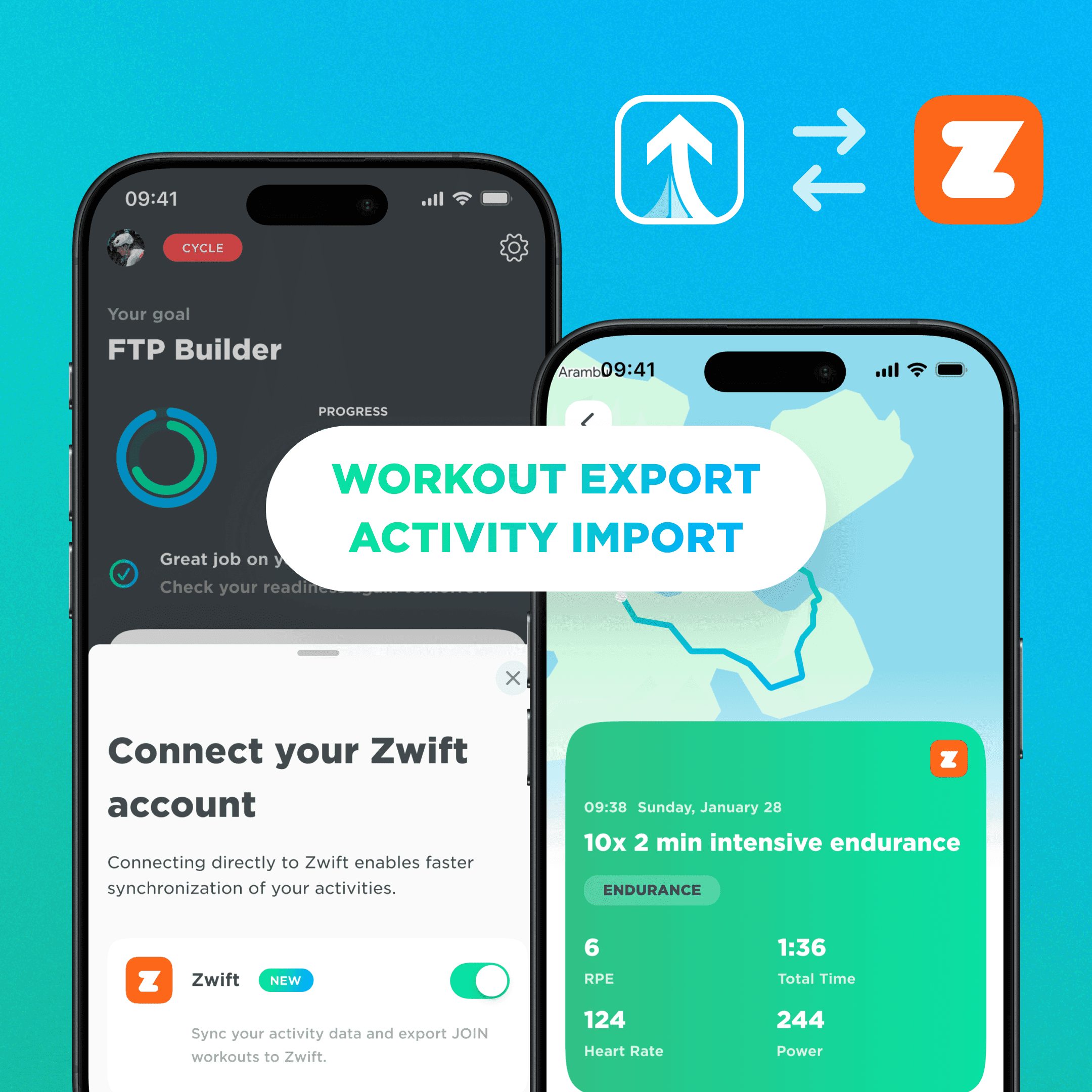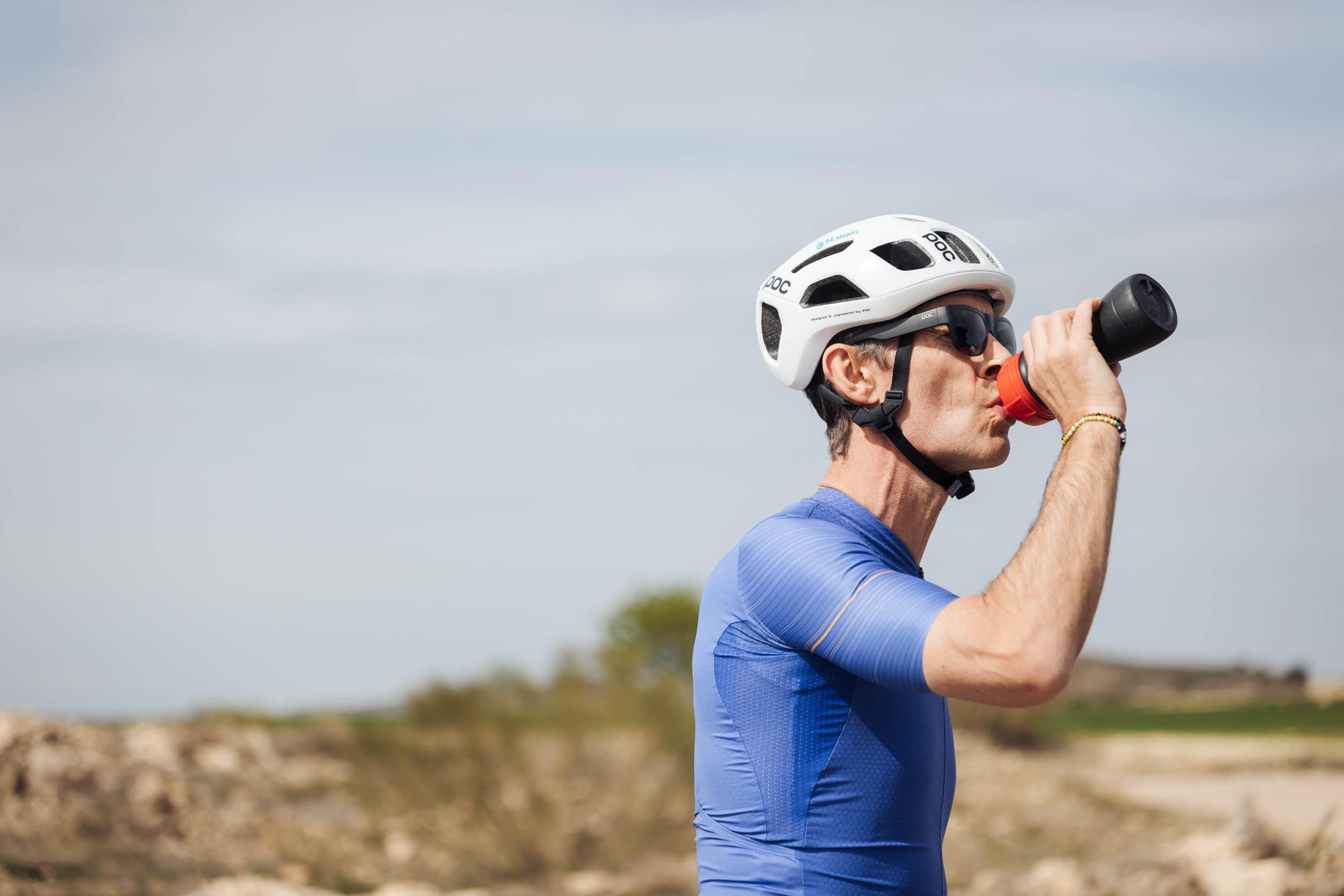Time trial: more than a game of hard pedaling

Mar 15, 2023

Time trial: more than a game of hard pedaling
Mar 15, 2023

Time trial: more than a game of hard pedaling

Mar 15, 2023

To set a perfect time, a time trialist must be well prepared. Time trial requires a lot of planning and training, it's more than a game of hard pedaling. When it comes to time trials, everything has to be right. The pacing strategy plays an important role. On windy and sloping courses, a rider must distribute his forces to perfection. On a flat course, pacing strategy is less important.
The biggest opponent in time trial is air resistance. You must therefore keep your frontal area as small as possible. Sitting position comes at the expense of comfort and therefore power. With wind tunnel testing and training hours in the time trial position, you can find out which position works best for you. These training hours on the time trial bike are not only important for getting used to the bike position. Cornering technique is almost as important on the time trial bike. This is because a time trial bike is much more difficult to control than a regular road bike. You need to train on this to maintain control during tricky turns.
Details in Time Trial
When you are in good shape, perfectly seated on the bike and able to go through turns at a decent speed, it is time to pay attention to the details in your Time Trial. When preparing for a time trial, you should explore the course as much as possible. That way you can better assess the turns and already think about your grading strategy. To get into the right focus for the time trial, you can use visualization to play the time trial back in your head several times already. Before the time trial, warm up. Your leg muscles should be well warmed up before the race starts, as they will be able to provide more power. It's also good to get your heart rate up well a few times during the warm-up, so you don't immediately catch your breath during the time trial and go into acidosis.
Divide your power
Everyone understands that you will have to divide your power in a 3 km time trial differently than a 60 km time trial. It is impossible to produce the average power you produce during a maximum performance for 3 km also over 60 km. So you have to start in a different way. Looking at a long time trial, where there is no influence of external factors, such as turns, wind and altitude difference, you can classify a time trial in 3 ways:
A strong first part, where you give everything and try to hold this in the second part as long as possible.
Delivering constant power, using up all your available energy.
Riding the first part of the time trial on reserve, so that you can go flat out in the second part.
Studies in Time Trial
Several studies show that the second way, distributing energy evenly, produces the fastest finishing time in a long time trial. This is because the first way causes the rider to blow up and lose too much time in the second part. Applying the third method leaves the rider with too much energy left when he or she crosses the finish line.
On a course that is anything but flat and the wind can play a role, option two is definitely not recommended. In order to achieve the fastest time here, the rider must drastically adjust his or her grading strategy. During the climbs and descents, for example, it is smart to vary your power output. After all, you have to have enough energy to face difficult mountains. You can only do this by saving on the flat parts of the course. So to eventually get better at time trials, the main thing you need to do is prepare well, be comfortable on the time trial bike and smartly plan the course in advance. Good luck!
To set a perfect time, a time trialist must be well prepared. Time trial requires a lot of planning and training, it's more than a game of hard pedaling. When it comes to time trials, everything has to be right. The pacing strategy plays an important role. On windy and sloping courses, a rider must distribute his forces to perfection. On a flat course, pacing strategy is less important.
The biggest opponent in time trial is air resistance. You must therefore keep your frontal area as small as possible. Sitting position comes at the expense of comfort and therefore power. With wind tunnel testing and training hours in the time trial position, you can find out which position works best for you. These training hours on the time trial bike are not only important for getting used to the bike position. Cornering technique is almost as important on the time trial bike. This is because a time trial bike is much more difficult to control than a regular road bike. You need to train on this to maintain control during tricky turns.
Details in Time Trial
When you are in good shape, perfectly seated on the bike and able to go through turns at a decent speed, it is time to pay attention to the details in your Time Trial. When preparing for a time trial, you should explore the course as much as possible. That way you can better assess the turns and already think about your grading strategy. To get into the right focus for the time trial, you can use visualization to play the time trial back in your head several times already. Before the time trial, warm up. Your leg muscles should be well warmed up before the race starts, as they will be able to provide more power. It's also good to get your heart rate up well a few times during the warm-up, so you don't immediately catch your breath during the time trial and go into acidosis.
Divide your power
Everyone understands that you will have to divide your power in a 3 km time trial differently than a 60 km time trial. It is impossible to produce the average power you produce during a maximum performance for 3 km also over 60 km. So you have to start in a different way. Looking at a long time trial, where there is no influence of external factors, such as turns, wind and altitude difference, you can classify a time trial in 3 ways:
A strong first part, where you give everything and try to hold this in the second part as long as possible.
Delivering constant power, using up all your available energy.
Riding the first part of the time trial on reserve, so that you can go flat out in the second part.
Studies in Time Trial
Several studies show that the second way, distributing energy evenly, produces the fastest finishing time in a long time trial. This is because the first way causes the rider to blow up and lose too much time in the second part. Applying the third method leaves the rider with too much energy left when he or she crosses the finish line.
On a course that is anything but flat and the wind can play a role, option two is definitely not recommended. In order to achieve the fastest time here, the rider must drastically adjust his or her grading strategy. During the climbs and descents, for example, it is smart to vary your power output. After all, you have to have enough energy to face difficult mountains. You can only do this by saving on the flat parts of the course. So to eventually get better at time trials, the main thing you need to do is prepare well, be comfortable on the time trial bike and smartly plan the course in advance. Good luck!
To set a perfect time, a time trialist must be well prepared. Time trial requires a lot of planning and training, it's more than a game of hard pedaling. When it comes to time trials, everything has to be right. The pacing strategy plays an important role. On windy and sloping courses, a rider must distribute his forces to perfection. On a flat course, pacing strategy is less important.
The biggest opponent in time trial is air resistance. You must therefore keep your frontal area as small as possible. Sitting position comes at the expense of comfort and therefore power. With wind tunnel testing and training hours in the time trial position, you can find out which position works best for you. These training hours on the time trial bike are not only important for getting used to the bike position. Cornering technique is almost as important on the time trial bike. This is because a time trial bike is much more difficult to control than a regular road bike. You need to train on this to maintain control during tricky turns.
Details in Time Trial
When you are in good shape, perfectly seated on the bike and able to go through turns at a decent speed, it is time to pay attention to the details in your Time Trial. When preparing for a time trial, you should explore the course as much as possible. That way you can better assess the turns and already think about your grading strategy. To get into the right focus for the time trial, you can use visualization to play the time trial back in your head several times already. Before the time trial, warm up. Your leg muscles should be well warmed up before the race starts, as they will be able to provide more power. It's also good to get your heart rate up well a few times during the warm-up, so you don't immediately catch your breath during the time trial and go into acidosis.
Divide your power
Everyone understands that you will have to divide your power in a 3 km time trial differently than a 60 km time trial. It is impossible to produce the average power you produce during a maximum performance for 3 km also over 60 km. So you have to start in a different way. Looking at a long time trial, where there is no influence of external factors, such as turns, wind and altitude difference, you can classify a time trial in 3 ways:
A strong first part, where you give everything and try to hold this in the second part as long as possible.
Delivering constant power, using up all your available energy.
Riding the first part of the time trial on reserve, so that you can go flat out in the second part.
Studies in Time Trial
Several studies show that the second way, distributing energy evenly, produces the fastest finishing time in a long time trial. This is because the first way causes the rider to blow up and lose too much time in the second part. Applying the third method leaves the rider with too much energy left when he or she crosses the finish line.
On a course that is anything but flat and the wind can play a role, option two is definitely not recommended. In order to achieve the fastest time here, the rider must drastically adjust his or her grading strategy. During the climbs and descents, for example, it is smart to vary your power output. After all, you have to have enough energy to face difficult mountains. You can only do this by saving on the flat parts of the course. So to eventually get better at time trials, the main thing you need to do is prepare well, be comfortable on the time trial bike and smartly plan the course in advance. Good luck!
More Relevant Articles
Discover valuable training tips to enhance your cycling performance.
More Relevant Articles
Discover valuable training tips to enhance your cycling performance.
More Relevant Articles
Discover valuable training tips to enhance your cycling performance.

Unlock Your Cycling Potential Today
Join thousands of cyclists who have improved their performance with JOIN's training plans.
Probeer het nu
Meer Informatie

Unlock Your Cycling Potential Today
Join thousands of cyclists who have improved their performance with JOIN's training plans.
By joining, you agree to our Terms and Conditions and our Privacy Policy.

Unlock Your Cycling Potential Today
Join thousands of cyclists who have improved their performance with JOIN's training plans.
By joining, you agree to our Terms and Conditions and our Privacy Policy.
Join Now
Join Now



